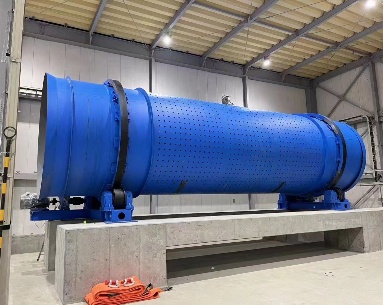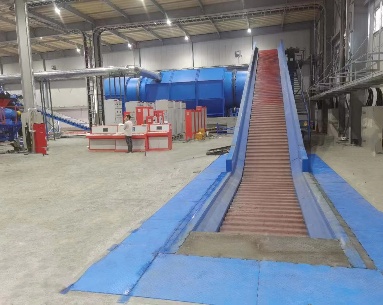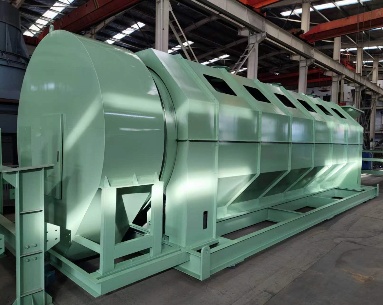
Optimize Your Waste Management Today with Our Advanced Drum Screens
-
Production Capacity:
80~200m³/h
-
Applicable Industries:
Recycling Plants/Waste Management/Composting Facilities/MSW
-
Power:
5.5-22kw
-
Core Components:
CE / ISO:9001
-
Place of Origin:
Henan, China
- Product Details
- Characteristics
- Working Principle and Application
- Parameters
Understanding the Mechanism and Optimization of Drum Screens for Waste Management
Introduction
In the realm of waste management, the efficiency of sorting processes plays a critical role in environmental sustainability and operational cost-effectiveness. One of the most essential technologies in this process is the drum screen. This article delves deeply into the working mechanisms of drum screens, highlighting various tumbling motions, optimization strategies, and our company's advancements in drum screen technology.
What is a Drum Screen?
A drum screen, often referred to as a trommel screen, is a rotating cylindrical sieve used in the waste management industry to separate materials by size. As waste is fed into the drum, it tumbles through the screen until it finds an opening that matches its size and falls through, effectively sorting the material based on particle dimensions.
Tumbling Motions in Drum Screens
Cascade Motion
Mechanism: In cascade motion, the drum rotates in a circular pattern, lifting the waste and allowing it to tumble down onto the material layer in front. This motion is akin to a waterfall in slow motion, where waste is continuously cycled to ensure thorough sorting.
Pros and Cons: The primary advantage of cascade motion is its simplicity and low energy consumption. However, it only utilizes a small portion of the screen, which may not be ideal for high-volume waste processing.
Waterfall Motion
Mechanism: At higher speeds, the drum throws the waste into the air, allowing it to fall back to the bottom of the screen along a parabolic trajectory. This high-speed motion creates significant turbulence, maximizing the recovery rate by increasing the contact time between the waste and the screen openings.
Pros and Cons: Waterfall motion offers the greatest turbulence and highest recovery rates, making it ideal for efficient waste sorting. However, it requires precise speed control to prevent excessive wear on the drum and its components.
Centrifugal Motion
Mechanism: When the drum rotates at very high speeds, the waste sticks to the screen due to centrifugal force, preventing it from falling through the openings. This motion results in a low recovery rate as the material remains adhered to the drum walls.
Pros and Cons: While centrifugal motion can help in reducing blockages, it significantly lowers the recovery rate, making it less desirable for efficient waste sorting.
Optimizing Drum Screen Performance
To enhance the performance of drum screens, several factors must be considered, including screen inclination and the installation of spiral guide plates.
Screen Inclination
Increasing the inclination of the drum screen by more than 5° can cause the recovery rate to drop rapidly. Therefore, maintaining an optimal angle is crucial for ensuring high efficiency in waste sorting.
Spiral Guide Plates
Installing spiral guide plates on the drum wall can significantly improve the recovery rate by preventing the material from following the inclination of the drum. These plates guide the waste along a controlled path, ensuring that it remains in contact with the screen for a longer duration.
Achieving Optimal Screen Efficiency
Efficiency in drum screens is achieved by balancing several factors, including residence time, screen surface area, and loading rate.
Residence Time
Uncrushed waste requires a minimum residence time of 25 to 30 seconds to ensure thorough sorting. This ensures that the material has sufficient time to pass through the screen openings, maximizing recovery rates.
Screen Surface Area
To achieve a screen efficiency of 90%, the screen surface area must be adequately related to the material load. Ensuring sufficient screen surface area relative to the volume of waste being processed is essential for maintaining high recovery rates.
Loading Rate
Pilot studies have shown that a loading rate of 0.4t/(m·h) for urban solid waste can achieve an 80% recovery rate. It is crucial to avoid exceeding the recommended loading rate to maintain optimal efficiency and prevent overloading the drum screen.
Critical Rotation Speed and Its Impact
Critical Rotation Speed: This is the speed at which the centrifugal force equals the gravitational force, causing the material to stick to the screen.
Optimal Speed: For a drum screen with a diameter of 2.7m, the best rotation speed is 45% of the critical speed, which corresponds to approximately 8r/min. Operating at this speed maximizes efficiency without causing excessive wear on the drum.
Handling Blockages in Drum Screens
Blockages in drum screens, often caused by slender objects, can hinder performance. Here are some solutions:
Changing Screen Position
The natural rotation of the drum can help dislodge blockages by changing the spatial position of the screen holes.
Manual Intervention
For more stubborn blockages, manual clearing is necessary. Additionally, attaching a vibrator to the drum screen wall can help dislodge debris and maintain smooth operation.
Innovations in Drum Screen Technology
Our company has been at the forefront of drum screen technology, continuously researching and improving these machines. We have introduced several innovations, including enhanced spiral guide plates, advanced motor control systems, and wear-resistant materials. These advancements have significantly improved the efficiency and longevity of our drum screens.
Choosing the Right Drum Screen for Your Needs
When selecting a drum screen, several factors should be considered to ensure optimal performance:
Material Type
Different drum screens are optimized for various materials, so it is important to choose a screen that matches the specific type of waste being processed.
Loading Rates
Ensuring that the drum can handle the expected volume of waste is crucial for maintaining efficiency and preventing overloading.
Customization
Our company offers tailored solutions to meet specific requirements, ensuring that each drum screen is perfectly suited to the needs of the client.
Installation and Maintenance Tips
Proper installation and maintenance are key to the longevity and efficiency of drum screens:
Setup
Follow best practices for alignment and secure mounting to ensure smooth operation.
Maintenance
Regularly check for wear and tear, clean screen openings, and lubricate moving parts as needed to maintain optimal performance.
Case Studies and Success Stories
Our drum screens have been successfully implemented in numerous projects, demonstrating their effectiveness and reliability. For instance, a municipal waste management facility reported a 20% increase in recovery rates after upgrading to our latest drum screen model. Customers consistently praise the durability and efficiency of our machines, highlighting our commitment to quality and innovation.In addition, our mixing machine have also received wide acclaim, further strengthening our product line.
Contact Us
If you are interested in purchasing a drum screen or need more information about our products, please contact us. Our team of experts is ready to provide consultations and assist you in selecting the best drum screen for your needs.
If you want to read more information about how to boost traffic on your Website just visit www.zchmachinery.com
-
01Efficiency Drum screens provide high recovery rates, especially when optimally tuned, making them essential for efficient waste sorting.
-
02Environmental Impact By effectively sorting waste, drum screens contribute to recycling efforts and reduce the amount of waste sent to landfills, promoting environmental sustainability.
-
03Versatile Applications: Suitable for various types of waste, including municipal and landfill waste.
-
04Customizable Options: Tailored solutions to meet specific recycling needs and requirements.
Applications of Drum Screens
Drum screens are versatile and can be used in various settings, including:
Urban Waste Management
Drum screens are essential for sorting municipal waste, ensuring that recyclable materials are efficiently separated from non-recyclable waste.
Industrial Applications
In manufacturing processes, drum screens are used to separate materials, enhancing the efficiency of production lines.
Agricultural Uses
Drum screens are effective in sorting organic waste, making them useful in composting and other agricultural applications.
| Model | Length Range | Segment No. | Aperture Size | Power (Kw) | Inclined Angle | Max. Material Size | Rotating Speed(rpm) |
| ZCφ600 | 2-4m | 1-2 | ≤30mm | 2.2-3 | 0-7° | 60mm | 12-18 |
| ZCφ800 | 2-5m | 1-3 | ≤50mm | 3-5.5 | 0-7° | 100mm | 12-18 |
| ZCφ1000 | 2-6m | 1-4 | ≤100mm | 4-11 | 0-7° | 150mm | 10-18 |
| ZCφ1200 | 3-8m | 1-4 | ≤150mm | 5.5-18.5 | 0-7° | 200mm | 9-15 |
| ZCφ1500 | 3-10m | 1-5 | ≤200mm | 7.5-22 | 0-7° | 250mm | 9-15 |
| ZCφ1800 | 4-12m | 1-5 | ≤220mm | 7.5-22 | 0-7° | 270mm | 8-15 |
| ZCφ2000 | 5-15m | 1-5 | ≤250mm | 11-30 | 0-7° | 300mm | 8-12 |
| ZCφ2500 | 5-18m | 1-6 | ≤300mm | 11-30 | 0-7° | 350mm | 8-12 |
customized according to your requirements
-
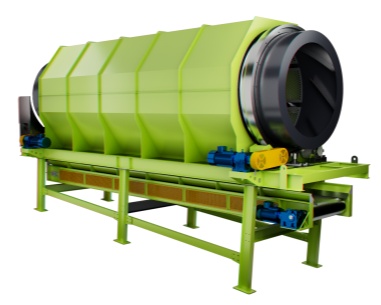 Garbage screening drum screenTrommel screen is consisting of five parts: drum, frame, hopper, reducer and motor.After the material goes into the drum, it is screened along with the rotation...Get Quote
Garbage screening drum screenTrommel screen is consisting of five parts: drum, frame, hopper, reducer and motor.After the material goes into the drum, it is screened along with the rotation...Get Quote -
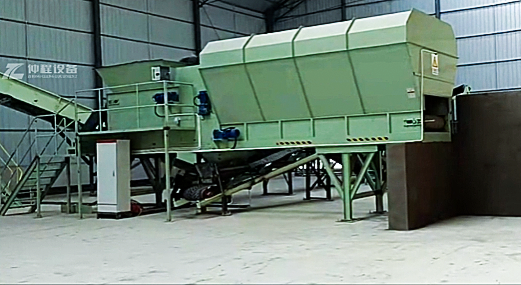 Wind Separator Technology for Lightweight Materials in Urban Solid Wastewind separator, also known as air separation, is a sophisticated and efficient method of sorting that utilizes air as the separating medium.Get Quote
Wind Separator Technology for Lightweight Materials in Urban Solid Wastewind separator, also known as air separation, is a sophisticated and efficient method of sorting that utilizes air as the separating medium.Get Quote -
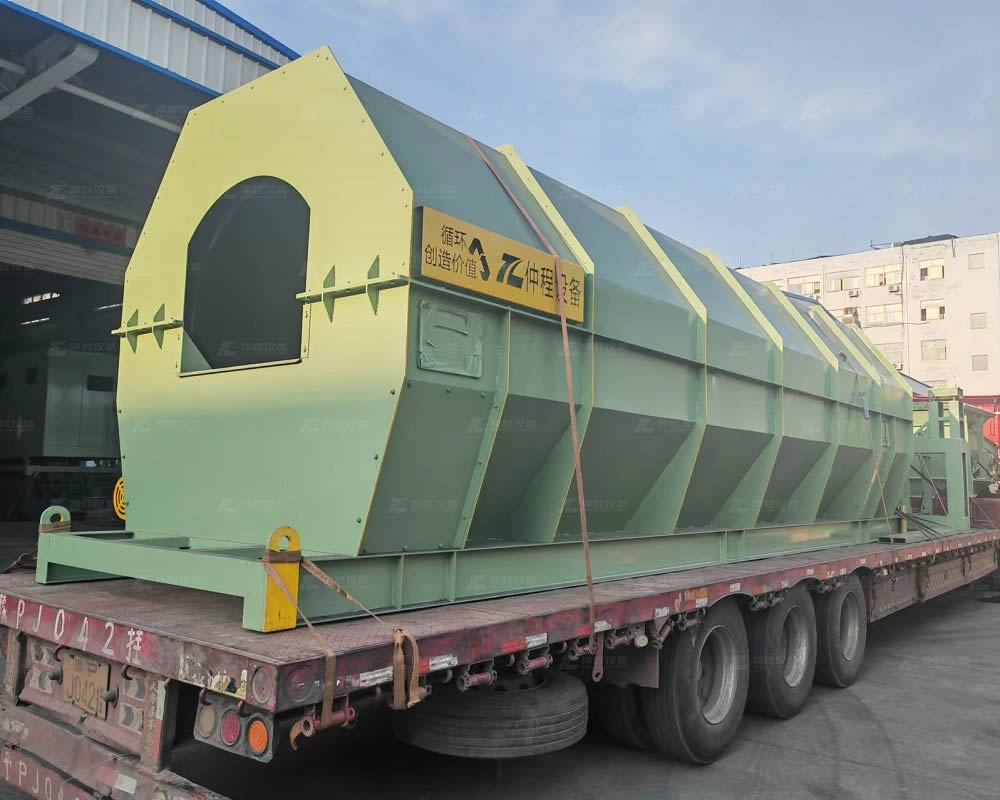 Waste Trommel And Copmost TrommelHowever, it's important to choose the right type of drum screen based on your specific needs. Today, Kevin from Zhongcheng Company will explain the differences...Get Quote
Waste Trommel And Copmost TrommelHowever, it's important to choose the right type of drum screen based on your specific needs. Today, Kevin from Zhongcheng Company will explain the differences...Get Quote -
 Five factors influencing the output of a drum screen.The input efficiency and separation efficiency of the drum screen are controlled by the screen hole size, drum screen diameter, rotation speed, baffle type and ...Get Quote
Five factors influencing the output of a drum screen.The input efficiency and separation efficiency of the drum screen are controlled by the screen hole size, drum screen diameter, rotation speed, baffle type and ...Get Quote


